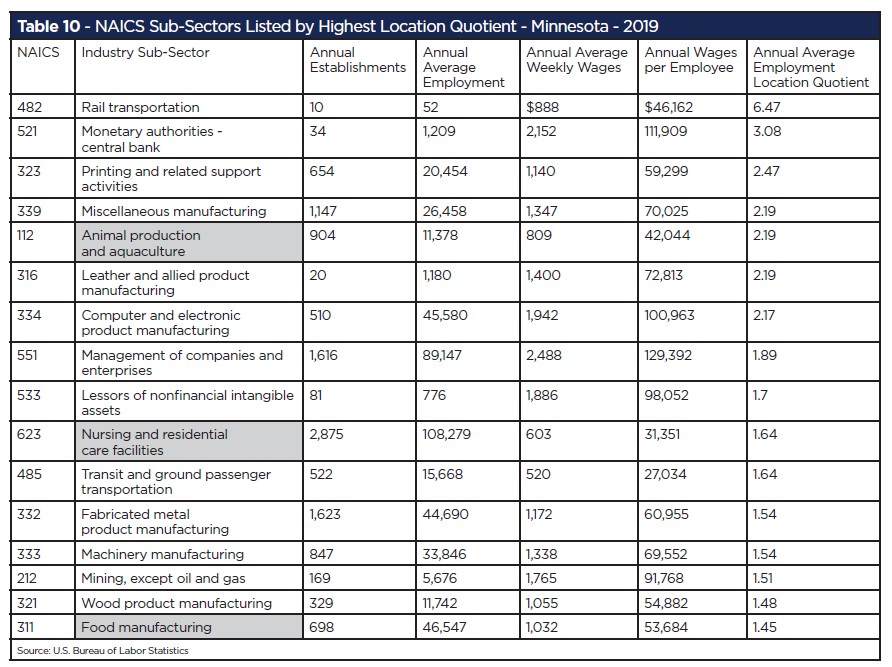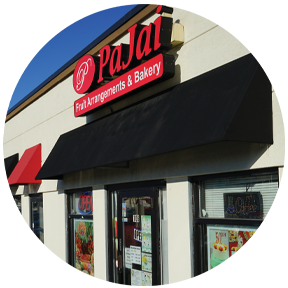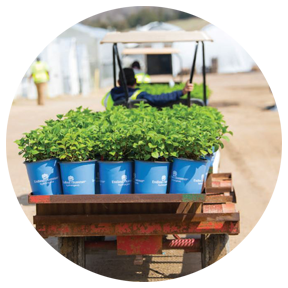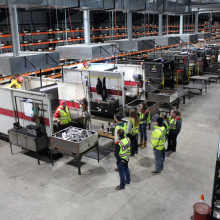The Economic Contributions of Immigrants in Minnesota: Key industries’ reliance on immigrant talent
Key industries’ reliance on immigrant talent
-
Many of Minnesota’s most important industries have a strong immigrant presence.
-
Without immigrant workers, key industries such as agriculture, health care and food manufacturing could not be as successful in the state.
Minnesota has a diverse economy with specialization in numerous industries. Using location quotients, which identify specialization in an area, a few types of industries stand out as integral to the Minnesota economy. Table 10 outlines the top NAICS subsectors arranged by highest employment location quotient. These specialized industries include numerous forms of manufacturing, animal production, and nursing and residential care facilities. This report focuses on three of the top 10 location quotient industries, as they reflect the state’s economy (manufacturing, agriculture and health care) and are heavily supported by immigrant workers.

Agriculture
Agriculture is an undeniably important part of Minnesota’s economy. As of 2019, Minnesota ranked 5th in the nation for agricultural production at $17.1 billion and 5th in the nation for agricultural exporting. Many immigrants are employed in this sector. In 2019, just under 7% of all agricultural workers in the state were foreign-born.56 The animal production subsector, including workers in the dairy industry, is made up of over 9% foreign-born workers and almost 32% of the forestry subsector is made up of foreign-born workers. Farm owners describe immigrants as irreplaceable assets in their industry, filling an important niche that native-born workers don’t. They play a variety of key roles, from the entry level to management, and are willing to work the long, arduous hours required in this industry.
Many immigrants are interested in starting their own agricultural business, but financing, marketing and business acumen present challenges. Perhaps the most basic aspect of farming is also the most difficult for immigrants to overcome—access to land. Land affordability and the real estate process can be difficult due to language barriers and process unfamiliarity. Even if they manage to secure land, new immigrant farmers may lack the training to be successful in Minnesota’s ecosystem. One program that helps address the problem of farmer training is Big River Farms. This education program is a part of the Food Group, a local nonprofit “focused on using nutritious food to strengthen community.” The farmer education course focuses on providing disadvantaged groups, including immigrants, the skills needed to start their own farm. Additional programs have emerged to help new immigrant farmers and grow Minnesota agriculture.
Twin Eagle Dairy Farm - Pat Lunemann
Pat Lunemann operates Twin Eagle Dairy, an 800-cow dairy farm with 1,500 acres of corn, alfalfa, and grass. His family has owned the farm since 1932.
Q: Tell us about your farm’s operations and employment.
A: My wife Jody and I own and operate a third generation farm. We started out as a small farm with about 50 cows but today we’re at about 850 cows and 1,600 acres of cropland. We have about 20 employees and a good percentage of those are immigrant workers. Many of them have been with us for a long time, some nearing 20 years. There’s always some turnover so we get some newcomers. We’re an equal opportunity employer, we have to be in rural America. Anyone who’s willing to work, we need to give them a chance to give us a hand. We need good people to take care of our livestock. It’s not an easy task finding labor, but we’re fortunate to have the people we do have today.
Q: Could you run your dairy farm without immigrant workers?
A: No, all of the willing and able are already employed. The number of people that are unemployed and looking for work is very small. Their skillset doesn’t fit what we do here on a farm. They’re not willing to get dirty and wear boots in the barn. You have to be willing to get dirty and put in long days. A number of people come and try it and say it’s not for me or just don’t show up the next day.
Q: Have you seen immigrant entrepreneurship in your community?
A: Absolutely! The old main street, which would otherwise be boarded up, has restaurants and other stores. I don’t see much in the farm sector simply because of the capital that’s required to start a business. I know the Department of Agriculture has some programs to help out beginning farmers, so you see most of it as fruit and vegetable farms because it can be started on a smaller scale. To be in farming these days it’s not easy for anyone to get started, you almost have to be born into it.
Q: In your opinion, why is the immigrant workforce so positive for Minnesota’s economy, particularly the agriculture economy?
A: The immigrants are bringing a new energy to this country. They’re willing to work, but they’re also bringing values that we seem to be losing in this country. They’re bringing family values to be honest, knowing that it’s important to show up to work on time and knowing that it’s important to work. They’re providing for their families, they care about the people around them, and they wouldn’t be in Minnesota if they weren’t willing to work and be here. You don’t come this far north without a mission in life and that’s to make your life and your family’s life better. In the end, what’s happening is that those immigrants, whether it be at the farm level or the food processing level, are touching the food that is on everyone’s plate. Without that first- and second-generation immigrant population, I’m afraid that our food supply would be in danger.
Health care and social assistance
The health care and social assistance industries employ 500,000 people and include over 18,000 establishments, touching all parts of the state and impacting many communities. The U.S. Census Bureau estimates that almost 53,000 immigrants work in this industry as of 2019. That means one in nine immigrants in Minnesota work in health care or social assistance. This is a higher rate than the state’s native-born population. In fact, a full 12% of the state’s health care workers are foreign-born as of 2019. Furthermore, 9,728 immigrants work in home health care making up approximately 29% of the total employment in this subsector. Health care and social assistance are essential industries: as Minnesota’s population ages, a robust and fully-staffed health care industry will prove to be more critical than ever before. Immigrant workers ensure that the essential services of this industry are offered at the levels needed.
Mayo Clinic - Christopher Wendt and Andy Danielson
Christopher Wendt is Chair of the Employment Law Practice Group at Mayo Clinic. He has 20 years of business immigration experience with a focus on immigration law.
Q: What skills and benefits are immigrant employees bringing to the job?
A: Cultural diversity and cultural perspective, important skill sets, both technical and soft skills. Hiring immigrants helps serve diverse populations like we have at Mayo Clinic. Being skilled in cultural competency helps critical care of diverse populations. Immigrants are coming to the U.S. and creating jobs in our experience.
Q: Could Mayo Clinic continue to operate without immigrant labor? What would be the impact of losing your immigrant workers?
A: Losing access to immigrant labor limits the pool of talented workers. Mayo would likely still be a world leader without immigration, but it would be a significant challenge and our ability to execute short-and long-term strategy would certainly be more difficult. If other communities in the U.S. had access to immigrants but Mayo did not, then Mayo would definitely suffer.
Andy Danielson is Chair of Business Development at Mayo Clinic Ventures.
Q: What has been the role of immigrant researchers at Mayo Clinic?
A: There has been a very positive, impactful role for immigrants in everything we do! This includes everything from intellectual property (IP) development through startup formation and the licensing of IP. It’s beyond the researchers as well, a lot of folks on the intellectual property management side are filing patents. In our office, there are immigrants who work to license those technologies as well.
Q: What more could be done to increase immigrant entrepreneurship in Minnesota?
A: I think Minnesota has a lot to offer! There is investment capital in this state; there are companies looking to work with startups; there is a very educated and talented workforce, so I think Minnesota has a lot of things going for it. Just being a welcoming community and having a talented workforce. There definitely is capital here, at least in our area (health care). One thing Minnesota is working toward and still requires some work are is industry clusters. A local ecosystem or an industry cluster is great for startups, if it can be established.
Q: Is there anything else that you want to share with us in terms of Mayo Ventures special role with immigrants and immigrant entrepreneurs?
A: I think these have been very good questions. I’m glad you did this report because immigrants do play a significant role and I think it’s an underappreciated topic. I’m speaking only to what I know but the number of immigrant entrepreneurs and the number of ideas we get from immigrants are substantial. They contribute a lot of great new ideas and create a lot of startup companies that employ many immigrants and non-immigrants. To quantify, my best guess is 25% to 30% of our intellectual property ideas come from immigrants. In Minnesota, I would say our immigrant entrepreneurs are about 10% of the total entrepreneurs we work with and the immigrant entrepreneurs that we work with nationally is a larger percentage, likely closer to 25%.
Manufacturing
Manufacturing is arguably one of the most important industries in Minnesota. It represents the single largest private sector component of Minnesota’s GDP totaling $52 billion in 2019.64 Manufacturing makes up over 13% of the state’s total employment. For the foreign-born population this figure is almost 20%—almost one in five immigrants in Minnesota work in manufacturing. The largest subsector is food manufacturing which includes almost 700 establishments with over 46,000 employees. One in five food manufacturing workers is an immigrant. Part of the draw for foreign-born workers is that employment opportunities in this subsector can offer relatively high wages without requiring a high level of education. In addition, immigrant communities have developed around these industries creating a desirable support system for foreign-born families.
75F – Deepinder Singh
Deepinder Singh is an immigrant entrepreneur in Minnesota and the Founder/CEO of 75F.
Q: Tell us about your background. How did you get started as an entrepreneur?
A: Well, to start, I have a background in IT, but I have always tried to identify problems and find a solution to those problems. Beyond that, I have pretty much always worked in startups.
Q: How did you start 75F?
A: I wanted to create a building solution that utilized the internet of things to make it easier and simpler to manage the needs of my house because my daughter who was one year-old was too cold in her room and would wake up crying in the middle of the night. My experience in this area made it a natural fit for me to solve this problem.
Q: Where did your funding come from?
A: We were actually self-funded for the first two to three years which is a challenge for many entrepreneurs but then in 2014 we won the Minnesota Cup competition which came with some funding. After that we went on to compete in other business competitions and bring in more funding this way. These competitions were especially useful for starting 75F because they provided lots of public relations and exposure for the company.
Q: What is it like in this industry as an immigrant entrepreneur?
A: Initially, I asked friends and family to help us with production. Many of my first employees were connections of mine. A friend in the industry was actually the one who told us about the Minnesota Cup competition which was new to me but really helped us out. I also found that credibility was a challenge for us getting started.
With support from The McKnight Foundation
![]()











